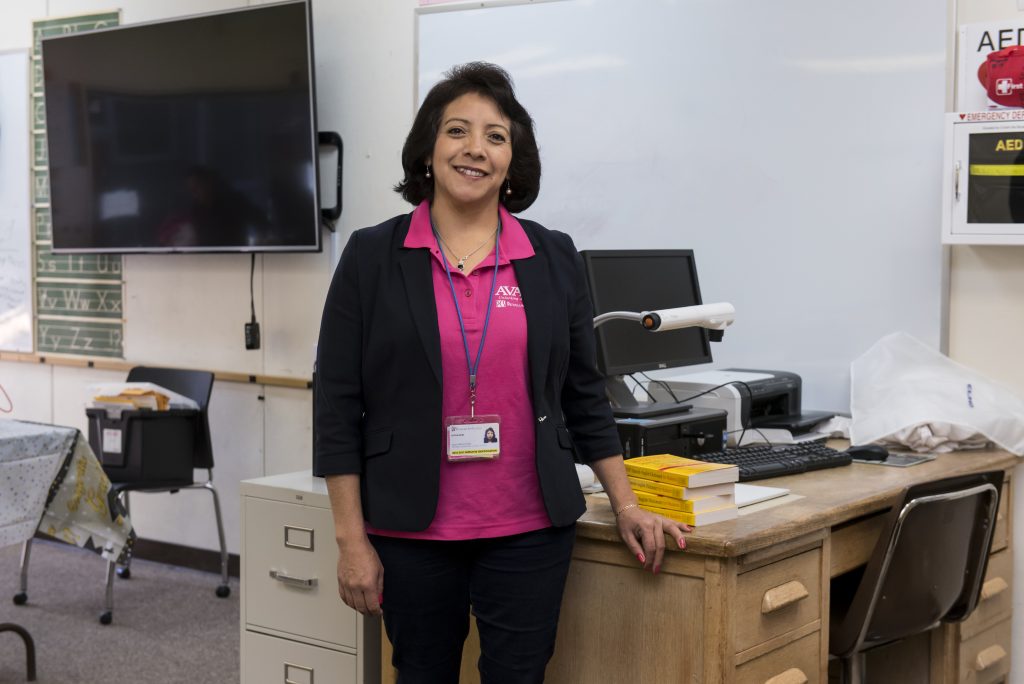Former ESL student reflects on her journey

Learning English wasn’t easy for Leticia Rojas. Finding the motivation for it was.
When Rojas came to the United States from Mexico nearly 20 years ago, she intended for it to be a visit. But her husband had landed a good job and a place to explore soon became a place to live.
With no education in English, Rojas struggled in the new environment. When her daughter had conflicts at school, the struggle turned into determination.
“She was suffering bullying at her school,” she says. “And I was having trouble communicating with her teacher.”
Rojas began English as a Second Language (ESL) classes at Petaluma Adult School. Since completing the program, she has become one of its success stories. Today, she teaches parents and children in the AVANCE Parent-Child Education Program, offered through the Sonoma County Adult Education Consortium. This program helps primarily Spanish-speaking families develop ties between home and their children’s school.
In this country, if you can navigate other cultures, you will be successful.
Vicki Mayster
Adult instructor, Petaluma Adult School
“I am so happy to be able to help all these people,” she says. “I am so thankful to the director of the ESL program. This gave me the opportunity to help other people.”
For Rojas, the motivation was her three children. Others bring their own stories and reasons to the program.
“Some want to be able to help their children in school,” says Vicki Mayster, an adult instructor at Petaluma Adult School for nine years. “Some are grandparents who just want to be able to communicate with their grandkids.”
Others, says Mayster, need the skills to enter or advance in the workplace, or to pursue a path to citizenship. Some need it simply to communicate better with doctors or others they encounter.
Because of that, ESL instruction includes life skills, such as responding to health emergencies.
Although Spanish is the leading primary language for ESL students, it’s far from the only one. Mayster estimates she has encountered close to 20 languages, including Creole and multiple indigenous languages.
Diversity itself is part of the class. Most of the students from other countries have not encountered this level of diversity, and discussions move beyond the language to things like holidays and other customs.
“It makes for a very rich learning environment,” Mayster says. “I think, in this country, if you can navigate other cultures, you will be successful.”
And sometimes, that road starts at home.
Rojas’ journey has not only brought her from student to teacher, but has allowed her to see her eldest daughter Faviola graduate from college, her daughter Evelyn graduate from high school and son Jose prepare for his senior year.
“It’s incredible,” Rojas says. “All those years passed.”
Written by Matt Jocks
| Regions | Classes & Topics |
|---|---|
| Bay Area California | English as a Second Language |